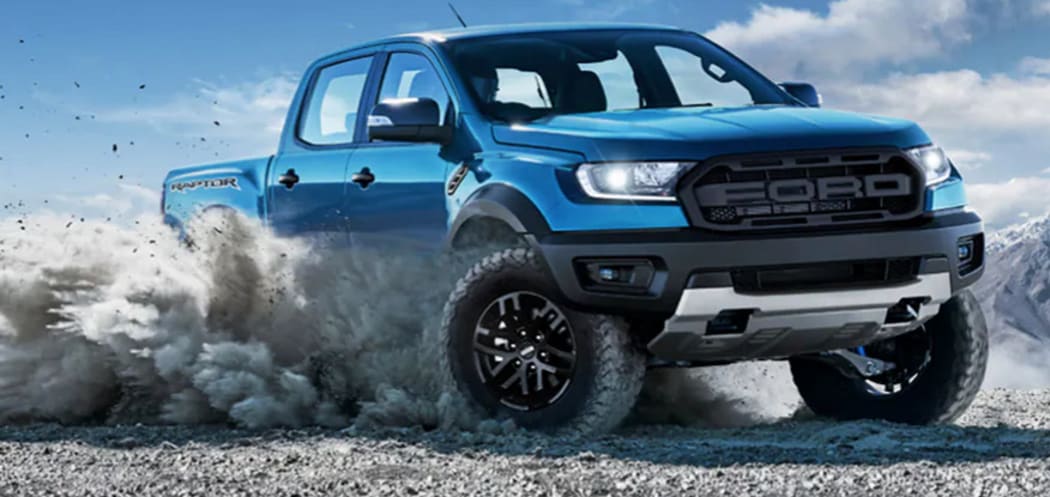The sale of super-sized utes in New Zealand continues to grow wiping out the environmental gains made by more fuel-efficient vehicles, an academic says.
There are now over 430,000 registered off-road vehicles; up 34 percent since 2010.
Eight out of ten new passenger vehicles are now SUVs or double cab utes and they are getting bigger and bigger, Dr Kirsty Wild, an environmental sociologist at the University of Auckland says.

Photo: Ford Advertising
New Zealand’s weak emission regulations are part of the reason for their ongoing popularity, she says.
“We're kind of like the States where there's nothing really stopping this trend, the auto manufacturers make much bigger profits on them, perhaps five times as much as a car.”
A large marketing push is also a factor, Ford spends 85 percent of its advertising budget on utes, she says.
The size creep in these types of vehicle is the result of a tendency to over engineer products, she says.
“It's tapping into that sort of preparedness chic that we see with marketing … it's like now everything's a Swiss Army knife that can potentially do everything.
“And you like the idea that it might be able to do everything, even though you're mainly just stuck in a traffic jam in the city and this thing.”
And as vehicles expand, a kind of arms race ensues, she says.
“We know that if you're in a car, you're more likely to be killed in a collision if an SUV hits you. And it used to be the case in the old days that when two cars hit each other, then the biggest deal was people flying around the car. And so, we got seatbelts, we got airbags, but now that we've got this big difference in size, when SUV hits a car, and because it's so high, and they're so rigid, they go over the front bonnet, and they actually penetrate the vehicle - like you're literally killed by these giant cars.
“So, all of a sudden people start to feel less and less safe. So, they want an SUV and then it just gets bigger and bigger because then you can't see over this new giant one. “
If we’d had stayed with the Toyota Corolla, the vehicle of choice ten years’ ago, our transport emissions would have dropped, she says.
“Everything's got more efficient, everything has got safer, except for it also got larger, which makes it more dangerous when it hits anything else - another car, a person - and also because it's got bigger the emissions have almost doubled from our bestseller 10 years ago, the Corolla to now with the with the Ford Ranger.”
The biggest problem with the big truck is they are largely driven in the city for personal use.
“We know that three quarters of the Rangers, the best seller of the utes, are being registered as personal vehicles - so the overwhelming majority.
And two thirds of trips made in such vehicles are for personal trips, not commercial use, she says.
They are a safety menace in the city, Wild says.
“In the States, for a long time, they had a decline in pedestrian fatalities. And then when you had the move to SUVs and utes, they're now got an upward trajectory of pedestrian deaths.”
She has some solutions to the use of these vehicles in towns and cities.
“Things like low emission zones, I think cracking down on vehicles being registered at all, if they can't fit a normal parking spaces, just discouraging driving in general in really built up areas.
“Linking things like what you pay for registration, or import taxes, all those sorts of things to your fuel efficiency, all those things encourage people to be in smaller vehicles.”
Despite trucks getting bigger and bigger they don’t offer much more space for passengers and are no safer than a van, she says.
“They don't actually have heaps of extra room because of the four-wheel drive, which people don't actually use that much. So, something like a minivan is both safer, because it’s not so high.”
These big utes are more prone to rolling, she says.
“They're not much safer, they don't actually have that much more room, but they've been marketed as a sort of you can still have kids, but you can be sporty, and you can be fashionable and have your tinted windows, chuck your kids in the back and then you’re still a single, stylish and fashionable person.”
There was a time when vehicles went in the other direction, she says.
“If we all work together as countries we can discourage this size creep … we can all send a message that we want vehicle size to be heading in the other direction again, as it did in the 70s and 80s.
Cars got smaller again, and baby boomers used to mock their parents’ cars for being these big gas guzzlers.”

